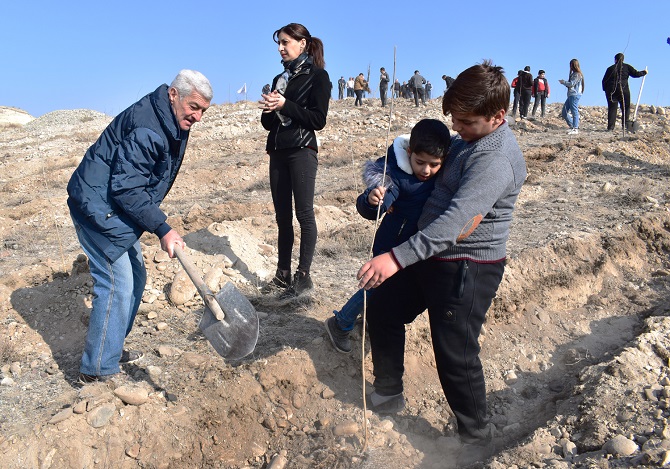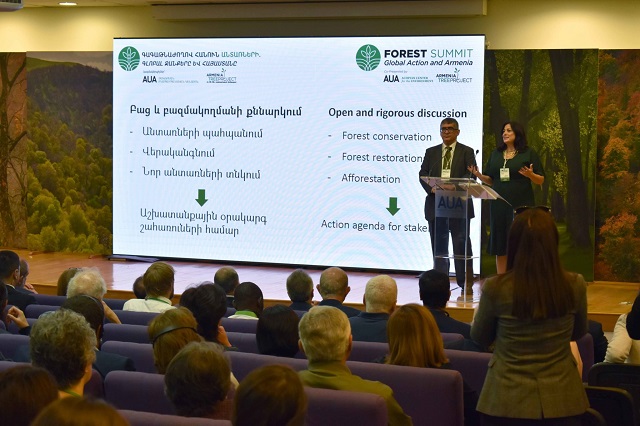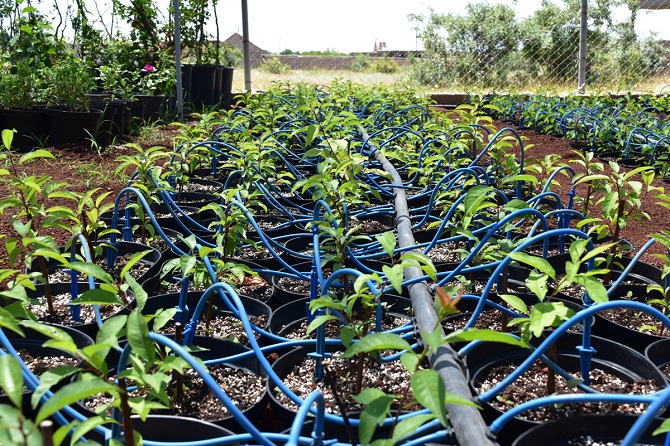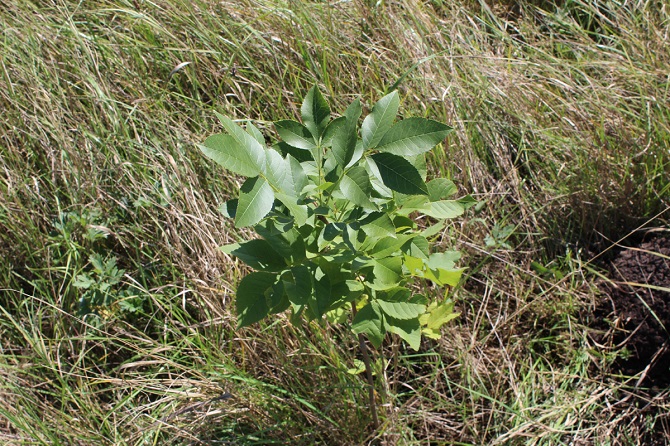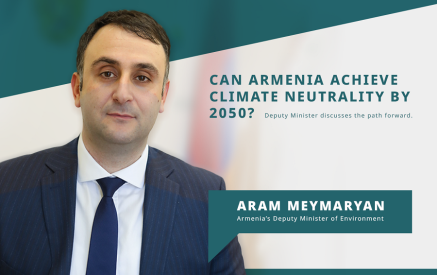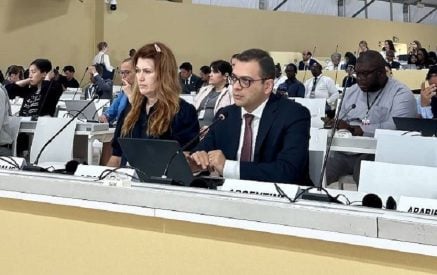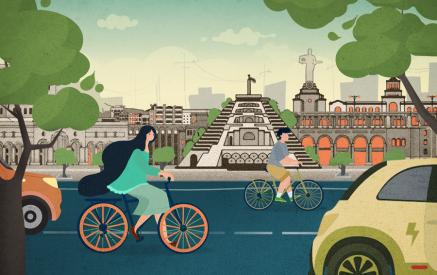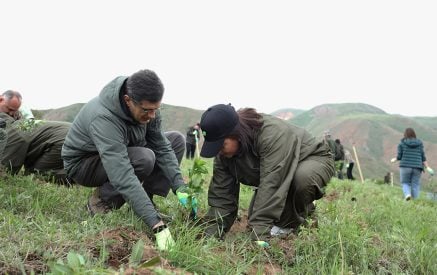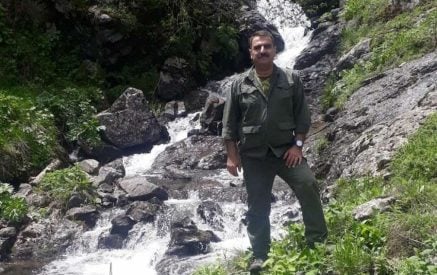The Armenian Weekly. “Plant the right trees, in the proper places, to support communities and sustain ecosystems,”said Dr. Anthony S. Davis, interim dean and professor of the College of Forestry at Oregon State University, at the inaugural “Forest Summit: Global Action and Armenia” at American University of Armenia.
The Community Tree Planting program is vital to Armenia Tree Project’s mission to assist the Armenian people in using trees to improve their standard of living and protect the global environment. ATP’s mission to make Armenia a more clean, green, and healthy place cannot succeed without the direct involvement of the community it aims to benefit.
About ATP’s Community Tree Planting Program
ATP’s Community Tree Planting (CTP) program incorporates various initiatives focusing on village and city greening, environmental stewardship, fruit harvesting, and the Backyard Nursery program. These projects take place in 1,313 rural and urban sites, 70 of which were new sites added in 2019.
Read also
Seyran Hovhannisyan, a monitor for the CTP program, remarks, “I was proud at the Forest Summit in October when experts such as Dr. Anthony Davis mentioned the need for community involvement. At ATP, we learned long ago that local community support and involvement is a key to our success.”
A majority of the CTP initiatives take place in the regions of Aragatsotn, Ararat, and Vayots Dzor. In 2019, the CTP program planted 52,660 trees and shrubs in Armenia and Artsakh. The total number of trees planted by ATP reached six million this year, including the seedlings planted by ATP’s Forestry program.
ATP has targeted the most vulnerable communities in villages, cities, and towns with the greatest need for greenery. The focus and attention that is given to these areas help ATP’s trees to grow and flourish, and creates a stronger bond between people and the land they live on. Major greening sites are typically public parks, schools, cultural centers, churches, historical monuments, and other significant landmarks where both the people and environment benefit from the CTP program.
ATP’s environmental education team also works with students in these communities, ensuring that future generations will be responsible stewards of the environment.
It is vital to have green areas in cities to protect people against pollutants and dust, and to provide shade and lower temperatures caused by hot summers and the urban heat island effect. ATP has been planting trees throughout the City of Yerevan for the past 25 years, as well as in other major cities and towns. These trees are not only saving lives by cleaning the air, but they’re also a major part of the beauty of Yerevan and its monuments and parks.
Coppicing and Provision of Fruit Trees Contribute to Sustainability
In terms of environmental stewardship, ATP advocates for responsible, sustainable practices. One such practice is coppicing, a method of woodland management which entails cutting tree stems which grow densely from one stump to near ground level so that the trees can grow to their full potential and thrive.
ATP hires residents of local communities to help with coppicing activities, and later, distributes most of the coppiced wood to village residents to use for cooking and heating. The remainder of wood is turned to mulch and used in ATP’s Mirak Family Reforestation Nursery for boosting plant growth, as well as in forestry plantings. ATP has partnered with Armenia’s State Forest Committee to help establish the coppicing project.
To raise awareness and promote a culture of environmental responsibility, ATP also organizes trash cleanups twice a year and is a major partner for World Cleanup Day in Armenia.
In terms of food security, ATP provides fruit and nut trees for families to plant in their backyards and on shared community land. These trees provide fresh fruit that families can consume, preserve, or sell as they see fit. These trees boost the community’s health, economic independence, and sustainability.
Since ATP began its work in 1994, more than 9,300,000 pounds of fruit have been harvested from these trees to improve food security at public institutions and in rural villages. For example, the fruit grown at the Sardarabad Memorial is sold and the proceeds are given to employees as Christmas bonuses. At Etchmiadzin Kindergarten No. 13, students enjoy the fruit at lunch and take more home to their families. Entire communities benefit from ATP’s work.
ATP’s Backyard Nursery program enables village residents to earn income by planting trees in their own backyard. ATP provides 1,200-1,500 seeds to families who care for and grow them over a 2-3 year period. ATP trains the landowners, supervises the planting, and monitors the site throughout the process. Once trees reach harvesting stage, ATP pays the Backyard Nursery owner for the trees, which are then replanted in a community site. In 2019, about 40 families harvested 33,490 tree seedlings for ATP, increasing their family income by 30 percent.
Experts Agree, It’s Not Just Planting Trees
Dr. Anthony S. Davis, interim dean of the College of Forestry at Oregon State University, and many other speakers at “Forest Summit: Global Action and Armenia” echoed the importance of community engagement in ensuring the success of tree planting and forestry programs. In short, it’s not just about planting trees.
Speaker David Mathenge of Kenya’s Green Belt Movement, an organization whose founder was awarded a Nobel Peace Prize, emphasized the importance of addressing specific local needs to best serve the community. The Green Belt Movement empowers communities by educating them about sustainable resource management, conservation, tree planting, and tree care. By giving power to the people, they are able to spread their positive impact on the environment.
Dr. Maya Nehme, director of the Lebanon Reforestation Initiative, spoke about monitoring, accurate mapping, and tracking forest fires. She also linked seedling survival rates to close cooperation and coordination with the local community, policymakers, and government agencies.
ATP’s 25 Years of Monitoring Data is ‘Extraordinary’
During a panel at the Summit on the role of technology, Guy Hydrick, GIS Administrator at the Metropolitan Area Planning Council of Boston, emphasized the importance of collaboration with the local community and monitoring long term data. Mr. Hydrick is a PhD candidate in Geography at Clark University and has been studying ATP’s tree planting and monitoring data. The database includes information about all of the trees planted by the CTP program since 1994.
“The ATP dataset is an extraordinary resource,” he explains, “which constitutes a larger sample of tree mortality than collected by any previous study by several orders of magnitude. The data maintained by ATP presents an excellent opportunity for research and collaboration with an exceptional and well-established urban and community forestry program, and in a region not well represented in this body of literature.”
Hydrick notes that the data shows that ATP’s CTP program has a very good survival rate. “The positive results that we see today are due to the fact that we have a clear understanding of the land, and of the people,” explains Operations Manager Arthur Harutyunyan. “We have a team of dedicated experts that guide us through the science of healthy tree propagation, and we partner with local people wherever we work. Our high tree survival rates depend on local community involvement.”
As Armenia renews its efforts to protect and expand its forest cover, ATP will play a major role by continuing to plant healthy trees all over the country, and by providing its expertise about working with people and meeting the needs of the local community. Because it is more than just planting trees.




















































